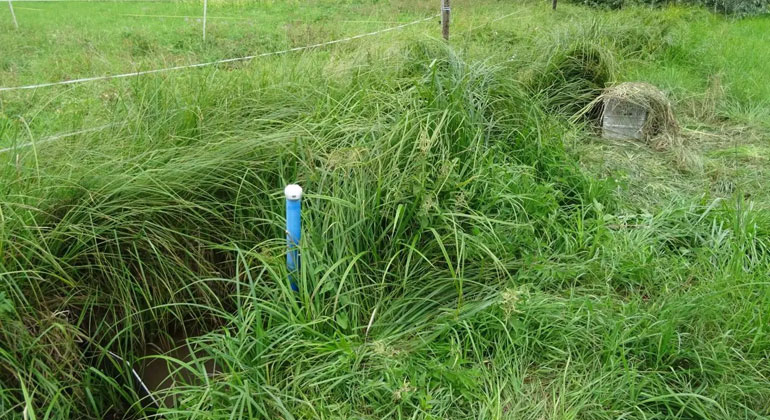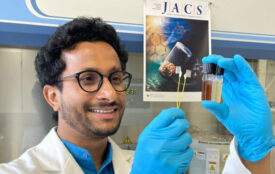Agricultural streams reduce pollutants in water cycle
Ditches and small streams at the edge of agricultural land contribute significantly to reducing agricultural pollutants in the water cycle. They promote nitrate reduction by microorganisms and thus have an important influence on nitrogen fluxes towards larger rivers and lakes.
A research team led by Prof. Dr. Tillmann Lüders of the University of Bayreuth has now demonstrated this for the first time. The scientists were able to show that the stream water is in intensive exchange with the surrounding groundwater, thus stimulating microbial activities. They present their research in the journal “Water Research”.
The study offers important backgrounds for a more sustainable shaping of agricultural landscapes. Agricultural lands, with their characteristic drainage ditches, could possibly be designed to more specifically eliminate pollutant loads from agriculture. Stream water, groundwater, and drinking water would thus better protected.
The ditches and streams at the edge of fields, often generated or altered by humans, collect up to 70 percent of the water in agricultural catchments. “The role that these streams play in keeping our water clean has been significantly underestimated by research to date. Until now, these ditches have been largely regarded as drainage systems, collecting and transporting water from agricultural lands, without having a significant impact on water quality. Our study now refutes this view. As we were able to show, the streambed of these water bodies is densely populated with microorganisms that eliminate nitrate. They reduce environmentally harmful nitrate to nitrogen gas. Surprisingly, we discovered fundamental distinctions in local microbial communities. In some sections of the streambed, we found classic denitrifiers, while others hosted the much less well-known, so-called chemolithoautotrophic nitrate reducers,” explains Prof. Dr. Tillmann Lueders, who holds the Chair of Ecological Microbiology at the University of Bayreuth.
Processing of sediment samples for microbiological investigation. Photo: Nia Blackwell.
The colonisation of the streambed by microbes that eliminate harmful nitrate is closely related to another phenomenon that the researchers have now been able to proof in interdisciplinary cooperation. The small streams not only collect water from the surrounding landscape, but simultaneously loose water to the surrounding groundwater.
“Here we have come across a previously unknown coupling between hydrology and microbiology. A more considerate shaping of agricultural landscapes should pay attention to this in the future. Our much better understanding of larger rivers should not lead to a disregard of such small, agriculturally influenced streams and ditches. Their contribution to the control of water quality at the catchment level should not be underestimated,” says Zhe Wang, lead author of the study and research associate at the Chair of Ecological Microbiology.
Subsequently, groundwater can also re-enter the stream further downstream. In result, more than 80 percent of the stream water can be exchanged over a flow distance of only a few 100 metres. All these processes depend on the local characteristics of the terrain and in turn influence the colonisation of the streambed by nitrate-reducing microorganisms.
Taking a sediment core in the streambed (from left: Zhe Wang, Tillmann Lueders (from left). Photo: Tillmann Lueders.
Research for the study now published in “Water Research” was carried out near the city of Tübingen. It was part of the DFG Collaborative Research Centre CAMPOS at the University of Tübingen, in which Prof. Lueders was involved as external partner. The team was also supported by the Bayreuth Centre of Ecology & Environmental Research (BayCEER) at the University of Bayreuth.
In addition, researchers from the Helmholtz Centre for Environmental Research UFZ in Leipzig, the Helmholtz Zentrum München – German Centre for Environmental Health in Neuherberg, and the Federal Institute for Geosciences and Natural Resources in Hannover (BGR) were involved in the study.
- Zhe Wang, Oscar Jimenez-Fernandez, Karsten Osenbrück, Marc Schwientek, Michael Schloter, Jan H.Fleckenstein, Tillmann Lueders: Streambed microbial communities in the transition zone between groundwater and a first-order stream as impacted by bidirectional water exchange. Water Research (2022), DOI: https://dx.doi.org/10.1016/j.watres.2022.118334








